Creating a food forest is an exercise in connecting people, increasing resilience and sustainability, reducing net migration, improving living quality, creating jobs, strengthening mental and physical health, up skilling youth, attracting tourists and generating profit for the area.
Generally, a food forest requires less maintenance than a traditional garden or monoculture system. Nature ensures that the forest survives and thrives. It balances itself through self-regulation and feedback loops.
A community food forest provides an abundance of food for residents and those that wish to visit to gather – fruits, vegetables, herbs and medicinal plants by way of a layered permaculture companion planting system. 20% of New Zealanders are classified as food insecure, which means they are lacking access to safe, affordable, nutritional and culturally appropriate food. A social and community based food forest will allow better access to affordable food for a growing number of low income or no income families
How to start a food forest
Start with planting canopy layer trees, these are the larger fruit and nut trees.
The best time to plant a fruit tree was years ago, but today is as good a day as ever.
When it come to planting which trees, choose fruit that you like to eat and is able to grow in your climate. If you look at the price of the tree versus the decades of fruit that you will gather each year, it’s an extraordinarily good investment.
To kill the grass and build soil around the freshly planted fruit/nut trees, lay thick layers of cardboard or newspaper (not glossy as it maybe toxic) then apply a thick layer (at least 300mm) of mulch ideally sourced from trees that have been mulched inclusive of leaf litter (leaf litter will assist with speed of breakdown of the mulch). To start you can’t plant directly into the mulch, it’s there to build soil, breakdown and feed the surrounding plants and trees, will retain moisture. It will be at least a season or two before the mulch will be broken down enough to plant anything into it. Until then all plants should planted through the mulch and into the soil below. At this early stage, existing trees or when planting trees, make sure room is left around the tree truck allowing the tree to “breathe”minimising rot and decay.
Here is a description of the layers of a food forest, making it quite different to an orchard or a garden.
The canopy layer is either a fruit or a nut tree, choose a fruit that you like, apple, pears, apricots, plums, peaches, figs etc and plant the tree in the centre of where you want to create your food forest. Either plant the main fruit tree first or dig through the mulch and plant into soil, make sure you keep mulch 300mm away from tree trunks and ensure grafts are not covered. Otherwise the mulch will rot the tree trunk killing it.
The second layer, choose a smaller fruit tree (semi dwarf apricot or nectarine etc) or a citrus tree (lemon, mandarin, lemonade, loquat etc), or even a small nut tree like a hazelnut. Depending on your space and amount of light you could chose 3-5 types of smaller tree to go in this layer. We also plant beneficial plants like kowhai and kakabeaks in this layer to provide nitrogen to the other trees and plants.
Third layer, choosing what berries you like, currants (red, black and white), cranberries (chilean quavas), gooseberries, goji berry, raspberries (red and golden) golden raspberries are so yummy, the birds don’t know they are rip as its not until they turn orange that they are ready to pop straight in your mouth. Again space dependant you could have a multitude of different berry types at this layer.
Fourth layer, choose perennial vegetables/herbs (asparagus, rhubarb, globe artichokes, chives, coriander), flowers that will attract bees and are edible, ie nasturtiums, rosemary, sage, thyme, oregano, lavender, borage etc. We always plant comfrey an abundandant accumulator, a long tap root that mines for nutrients like potassium and phosphate. As it grows I chop and drop it, spreading around the leaves, which quickly breakdown and feed the surrounding plants. Comfrey is a wonderful compost starter and brilliant liquid plant feed, the purple flowers bring in the pollinators and in the medieval days was called knit bone, used as a poultice it it is said to help broken bones heal.
Fifth Layer, choose wild and normal strawberries (white and red), incredibly strawberries don’t mind a bit of walking over. At this layer you can include pumpkins, kamokamo, squash, rhubarb etc. The idea is to cover the garden with an abundance of plants, if you don’t do it, nature will with weeds. However many weeds are edible and very nutritious ie cleavers, yes that sticky velcro plant can be eaten and even dried as a coffee substitute.
Sixth layer is our root crop layer, you don’t want to dig up and disturb the soil/mulch, so root crops are isolated too turnips, carrots, parsnips, beetroots etc. Pop your potatoes and kumara in a seperate area to your food forest. Sprinkle a few seeds of daikon (Asian radish) in open spots because the long roots can often be pulled with one mighty tug rather than dug; and, if you don’t harvest them, the blossoms attract beneficial bugs and the fat roots add humus as they rot.
Seventh layer is climbing plants, beans and peas, even hops. The plants will climb up the trees or you can install frames. Peas and beans are not only food, they are plants that will provide nitrogen to the other plants. This layer filling the unused regions of the all-important third dimension with food and habitat. Here are food plants, such as kiwifruit, grapes, hops, passionflower, and vining berries. These can include climbing annuals such as squash, cucumbers, and melons. Some of the perennial vines can be invasive or strangling; hence, they should be used sparingly and cautiously.
Gaps in your food forest plant annuals like lettuces, which don’t need lots of light to grow well so can be planted on the shady side of the food forest. If you wish include brassicas like cauliflower, Brussel sprouts, anything you like to eat, plant away…including peas which are a lovely snack and once finished producing will add nitrogen to benefit the other plants/trees… going back to brassicas, the flowers are so yummy, throw them into salads.
We plant garlic, chives and onions as food but they can also ward away pests.
We plant tomatoes and purposely don’t stake them as many varieties grow well by just letting them go bush.
In time you will find that in your mulch layer will start growing mushrooms, a sign that your soil is healthy and alive (do not be tempted to eat the mushrooms they maybe poisonous) You may want to inoculate areas of mulch with suitable edible mushroom spores.
Due to the depth of mulch, one of the last things to do is to install borders, the borders need to be high, 200-300mm height to retain the mulch, as birds will like to pick through the leaf litter. The borders will make things look tidy and easier to mow around
I have described above a single food forest guild, if you have room, you can plant at a spacing of 5-10 meters a multitude of different canopy trees. The more guilds of course will give you wider selection of food to eat.
Windbreaks
Windbreaks are barriers used to reduce and redirect wind. They usually consist of trees and shrubs but also may be perennial or annual crops and grasses, fences, or other materials. The reduction in wind speed behind a windbreak modifies the environmental conditions or microclimate in this sheltered zone. The trees and plants will produce larger crops with effective windbreaks.
For windbreaks I use native trees, plants and grasses, not only because they are effective, but also from a medicinal point of view, Rongoa. Your food forest could become a foraging haven for those with the knowledge, to come and forage for traditional medicinal plants. I have grown kawakawa under trees in Kaiapoi, a location not normally suited for this wonderful native plant. But if you create the right climatic conditions, you can grow a wide range of plants and trees.
Rongoa Plants/trees
AKE AKE (Dodonoea viscose)
ANGEANGE (Usnea barbata)
HARAKEKE, New Zealand Flax (Phormium Tenax)
HOROPITO (Pseudowintera colorata)
Kakabeak – nitrogen fixer
KAWAKAWA (Macropiper Excelsum) pepper tree
Kanuka
Kowhai – nitrogen fixer
KOROMIKO, Veronica (Hebe sticta/salicifolia) – diahorrea
KUMARAHOU (Pomaderris kumarahou)
MAKOMAKO (Aristelia serrata)
MANUKA (leptospermum scoparium) tea tree
MAMAKU (Cyathea medullaris)
Matipo (red matipo) Myosin Australis – for high blood pressure
Mingimingi – Coprosma propinqua
NGAIO (Myoporum laetum)
PLANTAIN (Plantago Major) Also known as KOPAKOPA
PATETE Schefflera digitata (Seven finger)
POROPORO Solanum Aviculare
POHUTUKAWA (Metrosideros excelsa)
PURIRI (Vitex lucens)
Rangiora – bushman friend – toilet paper, poisonous not to be swallowed.
TANEKAHA (Phyllocladus trichomanoides)
How Much Maintenance Is a Food Forest?
An edible food forest is the ultimate in producing, food whilst keeping in harmony with nature.
Forests usually exist without active management from humans.
- No one weeds a forest
- No one prunes the trees in a forest
- No one fertilizes a forest
- No one sprays for pests and disease in a forest
- No one waters a forest
- No one mulches a forest
During the first few years after planting, a food forest may require more maintenance to establish the young plants and ensure they are growing properly. This may include watering, mulching, pruning, and weeding as needed.
Once the food forest is established, the amount of maintenance required will typically decrease, and the area will become largely self-sufficient.
However, regular management is still necessary to maintain the health and productivity of the food forest. This may include tasks such as pruning, thinning, and harvesting as needed as well as monitoring for pests and diseases.
One of the benefits of a food forest is that it can be designed to require minimal maintenance by selecting species that are well-suited to the site conditions and require little intervention once established.
Additionally, incorporating self-seeding plants and natural pest predators can help to reduce the need for maintenance.
Setting up a community Food Forest ticks all the boxes when it comes to food security, it can enable people to connect through growing food, it can be a place to learn how to grow food sustainably, anyone that is looking for fresh seasonal food can collect/forage, seeds from harvested food can be then replanted the following season, its a way of getting back to basics as We are all Eaters – However We are NOT All producers.
“Growing Food – Growing Community – Growing for the Future”
Where the strength of weed or grass is tough, add a cardboard layer on top of the newspaper that will act as further worm food, a moisture retainer, and weed blocker. If you’re retrofitting an existing tree with sheet
mulch, layer out to the tree’s drip line (area on the ground over which the branches extend) and leave 3 or 4 inches around the trunk)
For the Hardcore Ninja Food Forest Enthusiast, I recommend Mike’s Deluxe Sheet Mulch which gives you over two years of soil-building at once. Start by following the initial directions above–chuck down your compost layer, newsprint, and cardboard. Follow by adding four inches of untreated wood chips[1] (this is called the “fungal layer”), another layer of cardboard, and your choice of topping (mulch, more wood chips, leaves, or leaf compost). If you leave out the second layer of cardboard because it is a windy site,[2] or you’re worried it will become exposed, then double up on the topping.
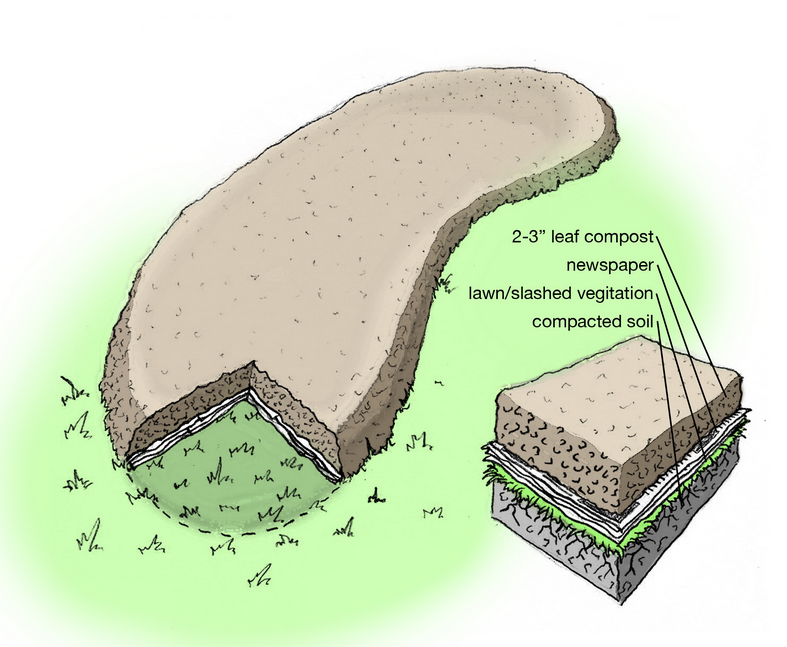

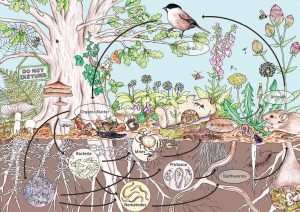
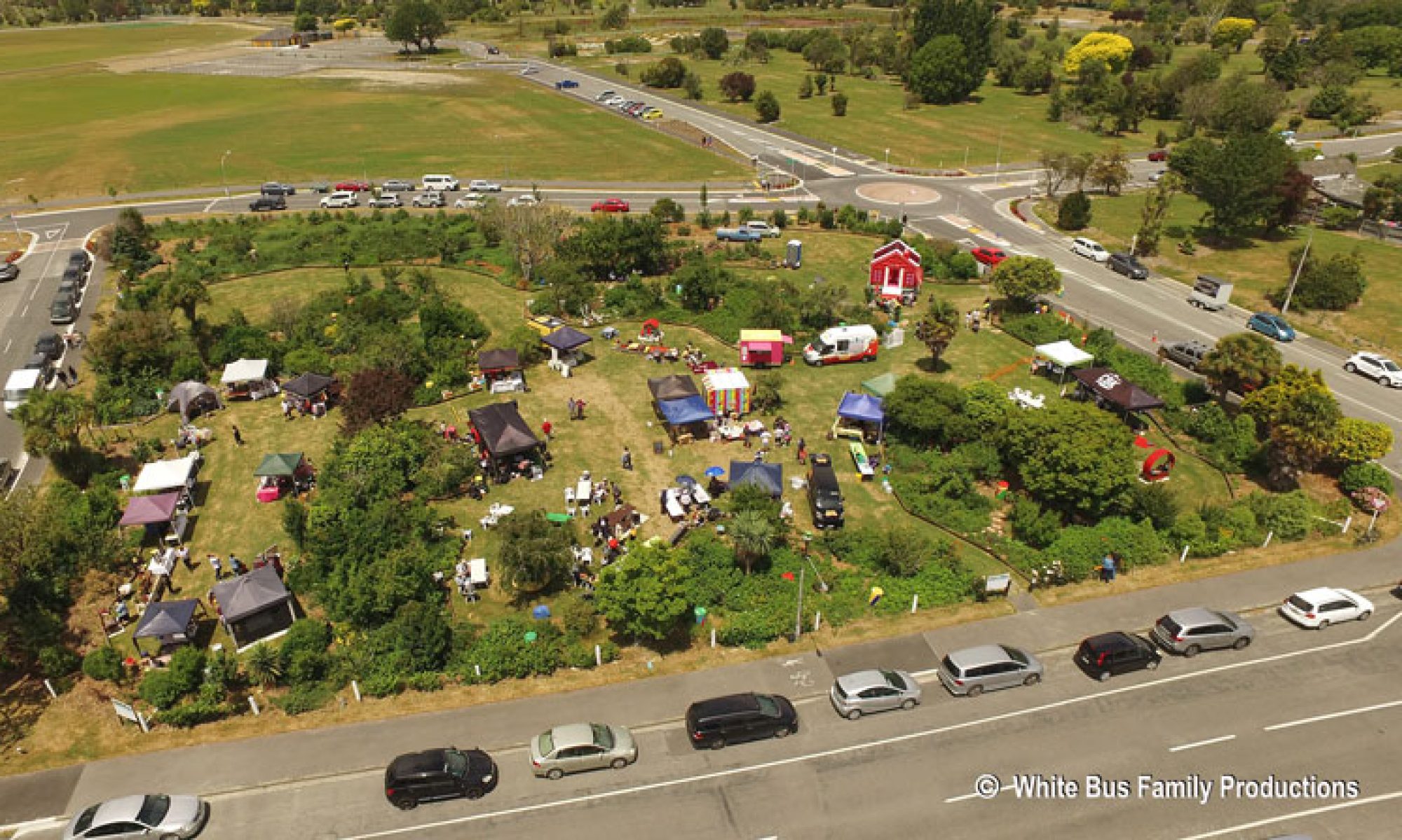
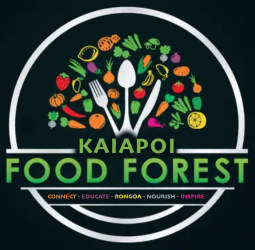
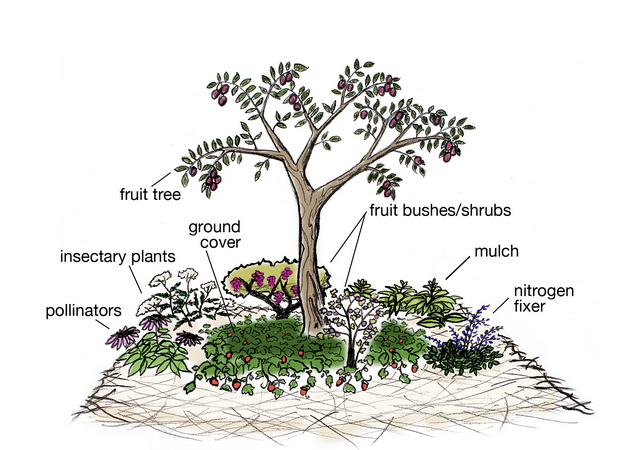
You must be logged in to post a comment.